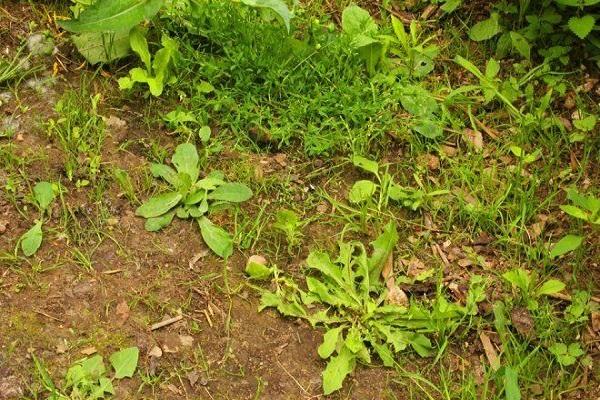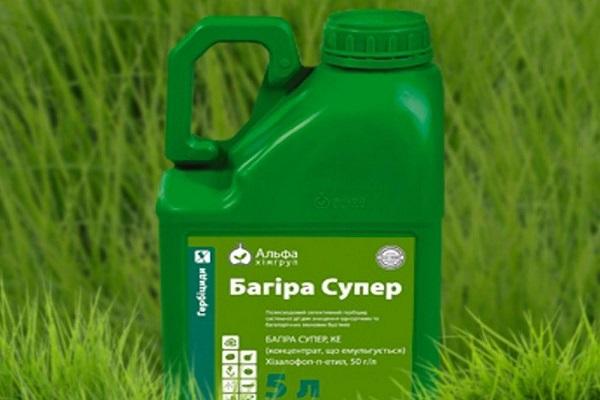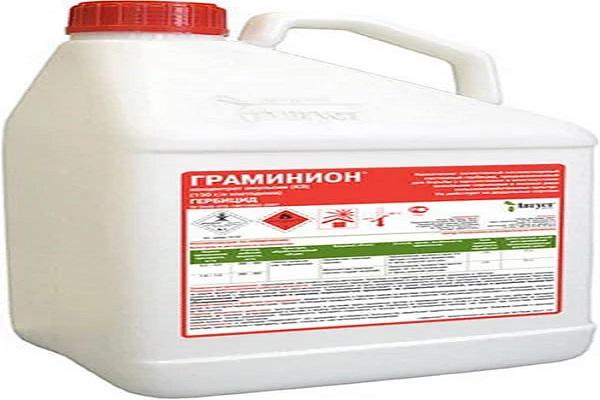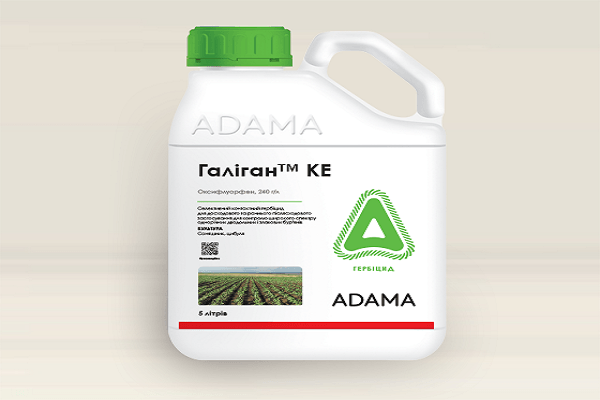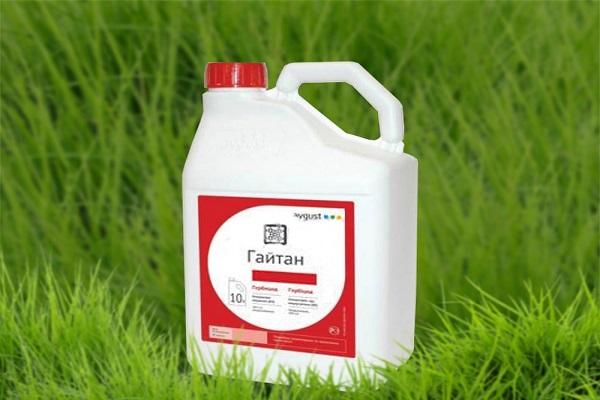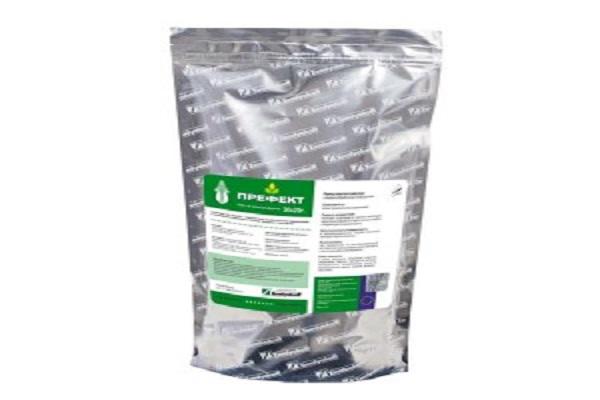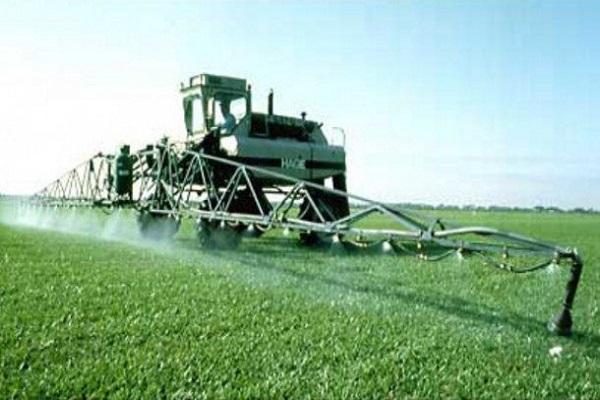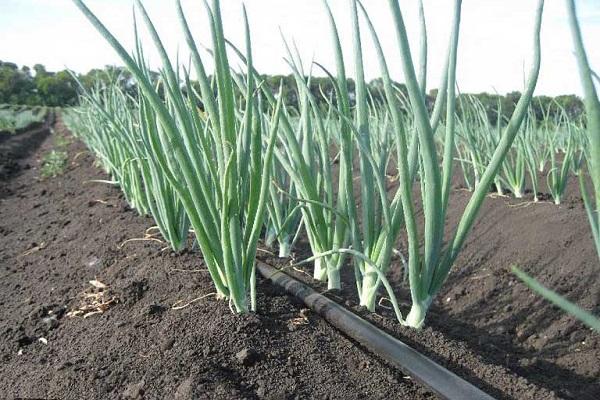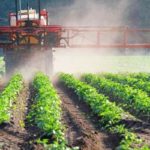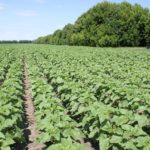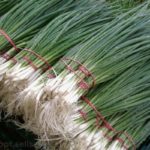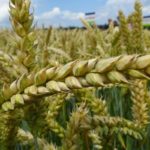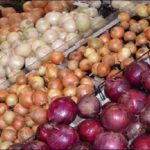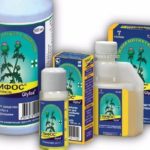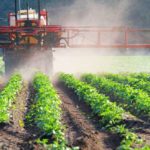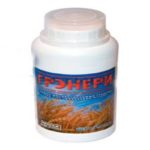Onions are one of the most sensitive cultivated plants to weeds, so specialists have developed a large number of chemicals designed to treat them. Herbicides for spraying onions should be used systematically, having first studied the instructions on the manufacturer’s packaging.
Common weeds in onion plantings
Onions need maximum nutrients. It receives most of its nutrients from the soil.But weeds, growing with a massive rhizome, do not allow the bulb to develop normally, absorb and store organic and mineral components, thereby causing the death of more than 85% of the crop.
Weed control is a mandatory agrotechnical practice when growing vegetable crops that have bulbs or roots.
The following types of weeds are known when growing onions:
| Group of plants | Examples |
| Annual and biennial dicotyledons
|
Common cocklebur;
knotweed; black nightshade; field grass; purslane; mayweed; field end; common groundsel; common shepherd's purse |
| Perennial dicotyledon | Thistle is bristly;
field sow thistle; field bindweed |
| Annual cereals | Gray bristlecone;
chicken millet; crabgrass blood red |
| Perennial cereals | Common reed;
creeping wheatgrass |
Previously, when processing fields, exclusively mechanical weeding was used, but the method turned out to be ineffective, since it was caused by huge material and physical losses, the death of more than 10% of onions. Practice has shown that growing onions using labor reduces yields by 20 percent.
Therefore, the optimal solution is to use chemicals to eliminate weeds.
List of funds
Before purchasing a herbicide, you need to familiarize yourself with their diversity, study the features of well-known brands that are used by experienced gardeners and enterprises on an industrial scale.
"Bagheera"
A post-emergence selective herbicide that controls annual and perennial grasses, controlling their growth. The active substance is quizalofop-P-tefuril in an amount of 40 g/l.The drug has a detrimental effect on the root system, which prevents the re-growth and development of weeds.
The main advantages of the drug are that it is highly effective regardless of temperature conditions, does not have a phototoxic effect and does not affect crop rotation.
For processing, 200-300 liters per 1 hectare is enough. Spray the weeds in the phase of 2-4 true leaves.
"Graminion"
Selective herbicide with a systemic penetration method to control a wide range of cereal weeds, especially wheatgrass. The composition is dominated by clethodim in a volume of 150 g/l.
The advantages of the drug are its high speed of action; it quickly penetrates all parts of the weeds, including their rhizomes, and stops their development.
Working fluid consumption is from 100 to 300 l/ha. Can be used in the phase of 2-3 true leaves. Not used when growing onions.
"Goal 2E"
The herbicide is able to protect onions from the harmful effects of annual weeds. Contains the substance oxyfluorfen. Its amount is 240 g/l. Quickly eliminates ragweed, pigweed, cruciferous knotweed and other dicotyledons. At the same time, the drug controls the re-germination of weeds without limiting further crop rotation.
For 1 hectare, 200-300 liters of working fluid are required. Irrigation should be carried out only after the cultivated plant reaches the phase of 2 true leaves. The drug is not intended for growing onions.
"Galigan"
A selective herbicide suitable for pre-emergence and post-emergence use. The active substance in the composition is oxyfluorfen (240 g/l). "Galigan" is considered an indispensable preparation for the cultivation of onions and garlic. The effect begins within 3-4 hours after treatment.
For the treatment of annual and biennial weed crops, 200-300 ml per hectare is enough. Not used for processing onions.
"Akzifor"
A unique modern herbicide for suppressing weeds during the cultivation of onions and sunflowers. The composition includes the active ingredient oxyfluorfen (240 g/l). Can be used before and after germination. After use, increased growth of cultivated plants is observed and seed germination increases significantly.
Spray in a volume of 200-300 l/ha. The procedure is carried out in the phase of 2-3 leaves of crops. The product is not intended for growing onions.
"Gaitan"
Systemic selective herbicide for treatment before plant emergence. Among the components, pendimethalin predominates in the amount of 330 g/l. It is able to protect the crop from weeds for a long period, preventing their germination, and also has no contraindications for crop rotation.
For treatment, 200-400 liters of solution per 1 hectare are used. The drug is prohibited when growing onions.
"Lemur"
Post-emergence herbicide for the control of annual and perennial weeds. The composition contains quizalofop-P-tefuryl in an amount of 40 g/l. It inhibits the vital activity of unnecessary vegetation within an hour, stopping all biological processes.
As soon as the weeds reach an early stage of development, irrigate according to a scheme of 200-300 liters of working fluid per 1 hectare.
"Zlakterr"
The herbicide is aimed at controlling cereal weeds. The composition contains clethodim (240 g/l), thanks to which the drug is known for its biological effectiveness and is characterized by high selectivity to crops.
The application does not depend on the phase of the plant being grown; the main thing is not to miss the active phase of weed growth.For a positive result, take 200-300 l/ha.
"Graminion"
Selective systemic herbicide for the removal of an impressive range of annual and perennial weeds in a short period of time. The drug contains clethodim in an amount of 150 g/l.
For treatment, select the desired phase of the weed (2-6 true leaves). Working fluid consumption is 100-300 liters per 1 hectare.
"Zlakoff"
A universal herbicide that fights any type of cereal weed with great speed. The main constituent substance is clethodim 240 g/l. It is safe for the crop being grown, does not linger in the soil and does not affect further crop rotation.
The effect can be achieved by applying 200-300 liters of solution per 1 hectare of field.
"Cobra"
A productive herbicide designed to eliminate a wide variety of monocotyledonous and dicotyledonous weeds. The composition contains pendimethadine 330 g/l, which provides complete protection of the cultivated plant throughout its growth and has a positive effect on its germination. The drug has no contraindications for crop rotation.
Spray before crop emergence, the amount of working composition is 200-300 l/ha. The substance is not suitable for growing onions.
"Legionary"
A selective herbicide for treating onions of all generations (not for feathers). The active substance is fluazifop-P-butyl (150 g/l). Spraying does not depend on the development phase of the cultivated plant; the weed must reach an intensive growth stage (2-4 leaves).
The optimal consumption rate of the composition is 200-300 l/ha.
"Demeter"
Systemic herbicide is a weapon against annual dicotyledonous plants. Active ingredient: 350 g/l. The substance can not only get rid of weeds, but also destroy their root shoots.
Use 200-300 liters of working substance per 1 hectare.
Which drug is better to choose?
When choosing a drug, take into account the species diversity of weeds and the individual characteristics of the crop variety. It is also equally important to take into account the growth phases of plants and, depending on them, select the appropriate preparation.
Features of the use of herbicides on onion plantings
Weed control must begin long before planting onions; usually the processing time is set for the fall in order to prepare the field for winter by removing perennial weeds and their root shoots.
The main thing is to correctly calculate the time of application of the herbicide so as not to have a detrimental effect on the crop. After the onion shoots, it is recommended to wait until 3-4 true leaves appear and are covered with a thick waxy coating.
Important! If you treat plants in the phase of one false leaf, there is a risk that the crops will die from the action of the desiccant.

